Time bomb
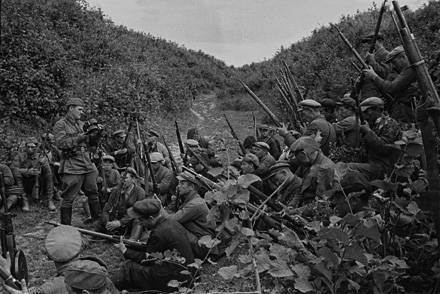 Only in the ranks of partisans and underground fighters of Belarus heroically fought against the Nazi invaders more than 440 000 Soviet patriots. They made a significant contribution to the liberation of their native land from the Nazis. Thus, the partisans of Belarus, along with other Soviet people's avengers, conducted active sabotage activities on enemy communications. Over the entire period of the struggle in the rear of the invaders in 1941 – 1944, they derailed the 11 128 German echelons and 34 armored trains; more than 18 700 vehicles were blown up and destroyed; 819 rail and 4710 other bridges were blown up, burned and destroyed; killed over xnumx xnumx rails. Attacks to the enemy’s communications were combined with acts of sabotage of patriots in the occupying institutions, at industrial enterprises, airfields, warehouses, bases, and other objects. Under these conditions, the presence of sabotage, mine-blasting and incendiary means among the partisans was of great importance.
Only in the ranks of partisans and underground fighters of Belarus heroically fought against the Nazi invaders more than 440 000 Soviet patriots. They made a significant contribution to the liberation of their native land from the Nazis. Thus, the partisans of Belarus, along with other Soviet people's avengers, conducted active sabotage activities on enemy communications. Over the entire period of the struggle in the rear of the invaders in 1941 – 1944, they derailed the 11 128 German echelons and 34 armored trains; more than 18 700 vehicles were blown up and destroyed; 819 rail and 4710 other bridges were blown up, burned and destroyed; killed over xnumx xnumx rails. Attacks to the enemy’s communications were combined with acts of sabotage of patriots in the occupying institutions, at industrial enterprises, airfields, warehouses, bases, and other objects. Under these conditions, the presence of sabotage, mine-blasting and incendiary means among the partisans was of great importance.In 1942, the summer offensive on various sectors of the Eastern Front, and especially on the Stalingrad direction, was planned by the nazis, laying great hopes on rail transport as the main means of transporting troops and equipment over long distances. However, the guerrillas blocked the path of enemy trains. Their actions assumed a threatening character, causing serious fears of the supreme chief command of Nazi Germany.
At the end of July, 1942, the imperial Minister of Communications Julius Dorpmyuller arrived in Kiev, occupied by the Nazis. A high-ranking German official traveled to the Eastern Front on orders from the Führer with a special mission: to identify on the spot the size of the losses incurred by the Third Reich from partisans by rail, and most importantly, to ensure the continuity of military traffic.
The Minister began by demanding a detailed report on the state of affairs from the General Directorate of Communications “Vostok” of Army Group “Center”. The facts contained there surpassed even the darkest assumptions of Dorpmyuller. Particularly impressive was the constantly increasing scope of partisan operations: in January 1942 of the year they made five raids on railways, and in the 25 days of July - already 304. The authors of the report, making forecasts, assumed that in August this figure would reach 360.
Judging by the report, the Germans inflicted the greatest damage to the Germans, which the elusive partisans installed under the railroad tracks. 200 locomotives were blown up on them - exactly the number that the entire locomotive industry of Germany could give in a month.
After many meetings and meetings at the railway directorate, they came to the idea of abandoning night traffic, although this led to a sharp reduction in their total volume. But it was precisely under cover of darkness that the partisans destroyed most of the enemy’s military echelons, which were heading east. In order to localize the action of the mines, to reduce the damage caused by them, the nazis decided to pass between stations the so-called control trains - the kind of minesweepers on the most dangerous stages. The calculation was simple: a control train on a mine would be blown up - a small loss, and it would not take long to restore the damaged section of the road. If the trolley successfully overcame the stage, then all day, of course, with the presence of guards, it was possible to bring manpower and equipment to the front with a full load. For some time, partisan mines were "fished". But then…
In the fall of 1942 of the year, as usual, in the early morning, along one of the highways that cut through forest expanses, another enemy mine anti-mine railway trawl, a railcar loaded with ballast, moved. When she successfully overcame the stage between two junction stations, behind her, developing a great speed, the military echelon rushed, then the second, the third. Suddenly, the earth shuddered from a powerful explosion, the neighborhood was announced with a clang of metal, the crash of cars crashing against each other, the shouts and groans of the wounded. For some seconds, the composition turned into piles of debris.
In the following days, several more echelons departed. Attempts by the Nazis to get to the bottom of the truth came to naught. Only one thing was clearly understood by the enemy - control trains lost all meaning.
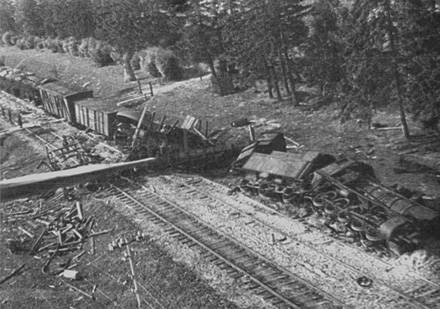 For the partisans and reconnaissance and sabotage groups, thrown into the enemy's rear, in the Soviet Union during the Great Patriotic War, the creation of mines, blasting and incendiary devices for special purposes was widely practiced.
For the partisans and reconnaissance and sabotage groups, thrown into the enemy's rear, in the Soviet Union during the Great Patriotic War, the creation of mines, blasting and incendiary devices for special purposes was widely practiced.As NI Krupnov, chief engineer of the State All-Union Design Bureau 47 (GSKB-47) later recalled, on the instructions of the USSR People's Commissar for Ammunition B. L. Vannikova to develop mines, blasting and sabotage weapons for partisan units in this bureau created a group of initiative designers, which included N. S. Noskov (head of department) and engineers B. M. Ulyanov, V. A. Ryapolov, G. M. Dyachkov, G. V. Bogolyubov, I. M. Matveyev. Initially, they studied the mines manufactured and used by the partisans. They were simple in design, but dangerous during operation and were easily detected during control rounds of railway tracks. GSKB-47 specialists had to develop safe and reliable mines, including slow and non-contact ones, and organize their industrial production with the aim of sending the devices directly to the rear of the enemy - those whom their products helped successfully crush the enemy.
At the beginning of 1942, the group of N.S. Noskova created the VZ-1 vibration lock designed for use in anti-vehicle mines. According to the testimony of Colonel I. G. Starinov, the former head of the Higher Operational School of Special Purpose, who trained personnel for miners for partisan detachments and sabotage groups, the mines with the VZ-1 vibration contactor did not require special installation and worked reliably both on the railway track itself and in to the side of it at a distance of 1 meters and at a depth of 1 meters.
The massive use of VZ-1 vibration locking devices made it possible to largely abandon railroad contact (pressure) action. Due to the complexity of the installation and the enhanced protection of the enemy by the railways, the massive use of contact mines was almost impossible even in the summer. The VZ-1 vibration lock was commissioned and sent to partisan units in Belarus, Ukraine, the Smolensk Region and the Bryansk forests. The snapper worked smoothly when moving heavy German vehicles and foot columns. On its basis, several time delayed anti-vehicle mines were created.
To explode high-explosive charges during the destruction of railways in the occupied territory in 1942, N.P. Ivanov developed the train fuse PV-42, which was installed under the rails and triggered when the first train passed.
It was to combat the German desire to localize the action of partisan mines on railways and reduce the damage caused by passing special test-engineering ammunition mines on the most dangerous sections of roads of control trains - loaded with ballast railcars.
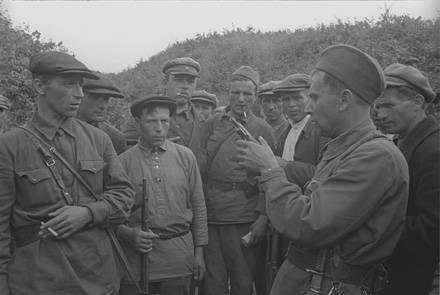 The partisans were highly appreciated by the so-called mine of the second train M2 P, designed by Nikolai Sergeevich Noskov and Boris Mikhailovich Ulyanov. The report of the head of the engineering department of the Belarusian headquarters of the partisan movement, Major A. Ivolgin, provides data on this device: “Reporting the results of testing an experimental batch of mines from the M2 P. 19 mines were found, of which 17 exploded under the second train and two during demining . With the help of the M2 P, 15 locomotives were destroyed, 130 railcars with different cargoes, 1 railcars were killed, 503 soldiers and officers were killed and wounded, the tactical and technical requirements of the mine justified brilliantly. ”
The partisans were highly appreciated by the so-called mine of the second train M2 P, designed by Nikolai Sergeevich Noskov and Boris Mikhailovich Ulyanov. The report of the head of the engineering department of the Belarusian headquarters of the partisan movement, Major A. Ivolgin, provides data on this device: “Reporting the results of testing an experimental batch of mines from the M2 P. 19 mines were found, of which 17 exploded under the second train and two during demining . With the help of the M2 P, 15 locomotives were destroyed, 130 railcars with different cargoes, 1 railcars were killed, 503 soldiers and officers were killed and wounded, the tactical and technical requirements of the mine justified brilliantly. ”In contrast to the mines of the MZD-2 and the DM, designed specifically for mining iron and auto-road roads and triggered by the first concussion, the MNNXX P anti-exit mine was designed so that it exploded only at the second concussion.
In the autumn of 1941, B. M. Ulyanov arrived in the Urals, where part of GSKB-47, in which he worked, was evacuated. Immediately struck an unusual silence, lack of disguise. The war here was felt in a tense labor rhythm, disorder of life, restrictions in the supply of food. But in the Urals the engineer did not linger: he was asked by telegram to urgently fly to Moscow.
According to the memoirs of B. M. Ulyanov, “this is how we began to carry out partisan orders. By itself, a certain division of labor occurred between us. Noskov was well versed in the radio business, so he was responsible for radio and electrical circuits. I was driving the whole mechanical part of the structures.
They lived like most Muscovites, on martial law, slept where they worked. Now one involuntarily wonders: where did the forces come from ?! Even at night, it happened, one woke the other to share the idea. Then they didn’t remember about the dream. ”
First, N. S. Noskov and B. M. Ulyanov developed a mine - “surprise” MC-1 with a chemical fuse. These mines were packed in boxes for chocolates and expensive varieties of cigarettes. Such a mine killed the gauleiter of Belarus, General von Cuba.
Ulyanov said: “Even in the summer of 1942, the first partisan order entered the GSKB-47 for a universal, compact mine, which should work during a shift. Above the drawings a lot broke their heads. After all, it required not only easy to handle, reliable mine, but also simple, cheap to manufacture. In addition, the time was running out. However, come up with. A simple mechanism was inserted into the “Troika” cigarette box, and it was filled with explosives.
The first tests were conducted right in the yard of your enterprise. First, with a partial charge, then emboldened, and, of course, observing all the precautions, undermined the mine with a full charge. The administration did not like these experiments very much, and we were asked to find another place. Finished checking in Izmailovsky Park. An experimental batch was sent across the front line to the Belarusian partisans. ”
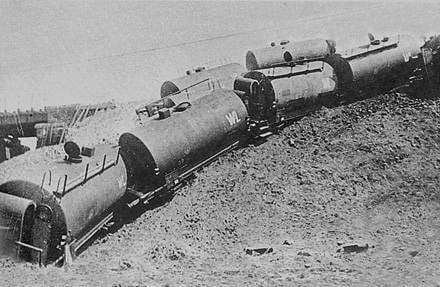 Partisan recall of this universal mine is stored among other partisan documents in the Central Archive of the Ministry of Defense of the Russian Federation: “The first experimental batch, 50 units, was sent to the partisan detachments. Mina has established herself among the partisans ... positively. For example, being installed in a motorcycle stroller, it exploded while landing a German officer who was killed, and two officers who were standing with him were also killed. Mina, placed in the drawer of the desk, exploded when opening the latter. ”
Partisan recall of this universal mine is stored among other partisan documents in the Central Archive of the Ministry of Defense of the Russian Federation: “The first experimental batch, 50 units, was sent to the partisan detachments. Mina has established herself among the partisans ... positively. For example, being installed in a motorcycle stroller, it exploded while landing a German officer who was killed, and two officers who were standing with him were also killed. Mina, placed in the drawer of the desk, exploded when opening the latter. ”However, as B. Ulyanov continued his story: “our work on the mine did not limit itself to making an experimental batch. The main difficulty was where to start mass production. Industrial enterprises, overloaded at that time beyond any measure, would hardly be able to additionally take upon themselves the order of the partisans and even execute it in a short time.
“Bring the matter to the end,” they asked us at the Central Headquarters of the partisan movement. It meant - to set up production of not tens - hundreds and thousands of mines. And at the same time to think about new designs. We turned for help to the staff of our institution. The administration has allocated space, tools, materials. The Moscow tobacco factory "Dukat" supplied us in the right quantity of cigarette boxes. More than enough volunteers were announced, although mines were made during off-hours, and certain skills were required. I remember that copier Zinaida Nikolaevna Lopatina and engineer Maria Sergeevna Utesheva mastered the soldering, assembly, pressing of trotyl sticks during the night. Their fingers were covered with burns, abrasions, but women seemed not to notice anything. Day after five hundred cigarettes factory "Ducat" with our stuffing thrown across the front line. "
For the burning of warehouses and other objects in GSKB-47, so-called pencils were developed - cardboard tubes with a diameter of about 30 mm and a length of about 180 mm filled with pyrotechnic composition. The tube, designed in the form of a pencil, had a fuse inside with a primer-igniter. It could be set at different times of deceleration. It was enough, passing by the object being set on fire, to pull a check out of a pencil pocket and throw a mine in the right place. After 15 – 20, the min mine was ignited.
They also used the diversion mines SC (“matchboxes”), designed and manufactured in the department of N. S. Noskov, which looked like matchboxes and exploded at the slightest attempt to raise them.
“Following them,” said Ulyanov, “we constructed a small, non-recoverable mine. The tests of prototypes confirmed its reliability, ease of handling and installation. " Here is an excerpt from another archival document: “Using only 15 prototypes in combat operations allowed us to destroy 3 echelon with fuel, 23 gas tanks, 8 cars, 3 locomotive, distillery, 188 tons of alcohol”.
According to B. M. Ulyanov, “then they gave us a new order - to find a substitute for a deficient import mine, the so-called sticky one. We coped with it. ” Sticky mine PLM, developed by talented designers instead of imported, was used for sabotage
on enemy airfields, railway stations, etc. It was attached to airplanes, cars, cisterns, etc. “The mine, attached under the table in the officer’s canteen, exploded when several people were there. With combat use only 21 mines destroyed: cars - 10, motorcycles - 2, wagons with ammunition - 4; damaged locomotives - 2; 24 soldier and officer killed and wounded. At the same time, not a single mine was torn off ”- these figures are from another report of the Central Headquarters of the partisan movement, which is stored in the Central Archive of the Ministry of Defense.
In the design department, headed by N. S. Noskov, a road mine was created specially for the partisans in three ways for mining country roads, trails and other routes of the German troops.
The magnetic mine MM was successfully used for similar purposes.
However, the greatest success brought all the same M2 P that outwitted the Nazis in the battle on the tracks.
According to the memoirs of B. M. Ulyanov, “it was not exactly the mine of the“ second train ”. When a representative of the Belarusian headquarters guerrilla movement explained to us what control trains meant, and expressed a wish to have a mine that would work under the second echelon, we asked: “Well, why exactly under the second, and not the third, fourth, fifth.” After all, it is possible that the Nazis will reveal the secret of the mines of the “second train,” and then everything will have to be redone again. ” “Of course, it’s good,” they agree, “to calculate the explosion so that it happens at the right moment, for example, under the fourth or fifth composition. Is it possible? ”
Honestly, we ourselves did not know then. But you have to ... They did not calm down until they got their way. True, it turned out mine is not easy. You cannot teach her to deal with her without special training in partisan units. We persuaded the authorities that we, as instructors, needed to go beyond the front line to the partisans. We agreed with these arguments, but we did not get into the enemy rear. The training of miners was organized in our front line. I had the opportunity to work under the guidance of the most experienced demolition man, Colonel Ilya Grigorievich Starinov. Noskov entered the disposal of the Belarusian headquarters of the partisan movement ".
At the beginning of 1943, B. M. Ulyanov was invited to the office of the People's Commissariat of Defense, where he met with IG Starinov.
Starinov asked the officer in the room to pick up an officer’s officer uniform for the engineer, feed him, and provide him with a dry ration along the route.
The next day, the plane climbed from the Moscow airfield and headed south. Three days later, the car landed in the area where the special purpose battalion was stationed, subordinate to Starinov.
Hard work has begun. Boris Mikhailovich was preparing two groups of miners who, in the coming days, having armed themselves with anti-personnel mines, were about to go to the enemy rear.
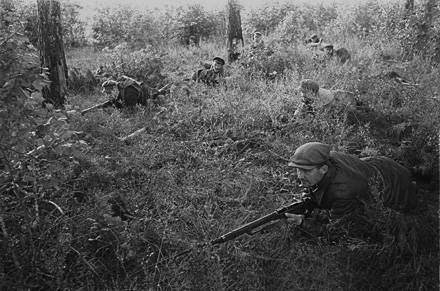 Only four months later, Ulyanov returned to Moscow. On the way to a station I bought a Pravda number a month ago. Looking through the list of works in the field of science and technology, awarded the State Prizes, I suddenly read the lines, the meaning of which I did not immediately realize: “... Noskov Nikolai Sergeevich, Ulyanov Boris Mikhailovich - for inventing new types of engineering weapons”.
Only four months later, Ulyanov returned to Moscow. On the way to a station I bought a Pravda number a month ago. Looking through the list of works in the field of science and technology, awarded the State Prizes, I suddenly read the lines, the meaning of which I did not immediately realize: “... Noskov Nikolai Sergeevich, Ulyanov Boris Mikhailovich - for inventing new types of engineering weapons”.Thanks to the simple design and manufacturability of these mines, their production was also able to be established behind enemy lines in partisan workshops. Partisan guards simultaneously with the mine-explosive ammunition sent their drawings to produce some of them on site.
In the department of N. S. Noskov, portable high-explosive incendiary grenades FZG-1, FZG-2 and FZG-3 were also developed. Grenades made in cases of non-metallic materials were easy to manufacture and were intended to set fire to tanks and fuel tanks.
Examples of the massive and effective use of mine-blasting on the communications of the German troops were the largest operations of the Soviet partisans, known under the code name "Rail War" and "Concert".
Operation “Rail War” by Soviet partisans was carried out from 3 August to 15 September 1943 in the occupied territories of the western regions of the RSFSR, BSSR and part of the Ukrainian SSR to assist the Red Army in completing the defeat of the German forces in the Battle of Kursk and the development of a general offensive. Before the start of the operation, only partisans of Belarus delivered about 37 tons of pressed tola, 522 mines of MSD-5, detonators, blasting caps, more than 60000 of Bickford's meters and 1500 of detonating cord.
The central headquarters of the partisan movement attracted 167 brigades and individual detachments of the Belarusian, Leningrad, Kalinin, Smolensk and Ukrainian partisans to carry out the operation. The actions, which involved about 100 000 partisans, were deployed in the rear areas of the German Army Groups Center, North, and South with a length of about 1000 kilometers and 750 kilometers in depth.
The operation began suddenly for the enemy simultaneously on all his main communications. After that, the partisans acted continuously: while the enemy was restoring one sector, they destroyed another. They destroyed not only railways and bridges, but also telephone and telegraph lines, engineering structures, destroyed firing points and guarding the enemy.
In total, during the operation “Rail War”, all partisan detachments that took part in it destroyed almost 215 000 rails, many train echelons, bridges, etc. Only Belarusian partisans derailed 836 echelons and 3 armored trains.
On some railways, traffic was delayed from 3 to 15 days. Operation Rail War made it much harder to regroup and supply the retreating German forces.
The success of Operation Rail War inspired the partisans. The central headquarters of the partisan movement ordered another operation of the same scale under the code name “Concert” to be held from 19 September to the end of October 1943. It was attended by 193 guerrilla formations totaling more than 120 000 people from Belarus, Lithuania, Latvia, Estonia, Karelia, Crimea, Leningrad and Kalinin regions. The length of the operation on the front is about 900 kilometers (excluding Karelia and Crimea) and in depth - over 400 kilometers. The operation was closely linked with the upcoming Soviet offensive in the Smolensk and Gomel areas and with the battle for the Dnieper. The main objective of the operation was to disable large sections of railway tracks in order to disrupt the enemy’s military transport.
During the operation, only Belarusian partisans blew up 90 000 rails, 1041 echelon, blew up the 72 railway bridge, defeated the 58 garrisons. As a result of the operation “Concert”, the throughput of the railways decreased by 35 – 40 percent, which significantly complicated the regrouping of the German troops and was a great help to the advancing Red Army.
According to data obtained from the Ukrainian and Belarusian headquarters of the partisan movement, on the railways of Ukraine and Belarus using mines and other ammunition created and manufactured by designers and workers of GSKB-47, more than 7600 railway echelons were destroyed or derailed during the war force and technique of the enemy. The merits of talented engineers and inventors were appreciated by the state: N. T. Kulakov, Head of GSK-47, N. I. Krupnov, Chief Engineer, designers N. S. Noskov and B. M. Ulyanov were awarded the Order of the Red Star and the medal “To Partisan Patriotic War »I degree.
Igor Vasilyevich Milchakov was another remarkable Soviet designer of special partisan armament during the years of the Great Patriotic War.
In September – October 1942 of the USSR People’s Milchakov Institute in the Moscow branch of the Scientific Research Institute-6 of the USSR People's Commissariat for Ammunition together with Valery Alexandrovich Bazhanov, Mikhail Vasilyevich Garanin, Maria Alexandrovna Sidorova, Zinaida Emelyanovna Skuratova developed effective partisans weapon - a whole series of sabotage incendiary means, including firing from the Soviet signal pistols of all types of 26-mm incendiary sabotage cartridge; incendiary hand grenade; thermite-incendiary checker; cumulative high explosive incendiary magnetic mine with moderators. These mines have become an effective means of destroying enemy railroad trains that delivered fuel to the front.
By the beginning of the war, the engineer of the laboratory of one of the institutions of the chemical industry, I. V. Milchakov, turned 27. He was not taken to the front - his eyesight failed. From peaceful affairs, the team of the chemical laboratory, which entered as a branch of the Scientific Research Institute-6 of the USSR People's Commissariat of Ammunition, switched to fulfilling orders originally from the Commissariat of Defense, and later from the Central Headquarters of the partisan movement.
In early September, 1942, Igor Vasilievich, who had then headed the laboratory, was invited to the Kremlin for a meeting on the creation of guerrilla warfare tools. The meeting was held by a member of the State Defense Committee, Commander-in-Chief of the partisan movement in the USSR KE Voroshilov.
However, no meeting in the conventional sense, as it turned out, was not prepared. Only two people were invited to Voroshilov: Milchakov and a representative of the design bureau.
“The conversation with Kliment Efremovich lasted about two hours,” Igor Vasilyevich later recalled. - I reported on the incendiary means for the partisans - the termite-incendiary checker with the moderator and the incendiary cartridge for the rocket launcher. He didn’t keep silent about the weak points, the elimination of which will improve the effectiveness of the igniting action, that it would be good to test these tools in practice.
Marshal in detail was interested in the technical characteristics of our developments. He advised me to think of detailed recommendations that could help the partisans to start making incendiary means from scrap materials. ”
Milchak did not anticipate that not one, but two more meetings would take place, and indeed very soon: the first was again in the Kremlin that September at a meeting with members of the partisan movement, the second at the testing ground near Moscow, where they held the test of the means of partisan struggle.
At the proving ground Kliment Efremovich warmly greeted Igor Vasilyevich, asked about the results of the work. Milchakov recalled: “... I briefly reported on the design and designation of the samples, received permission to open firing from a rocket launcher. The target was a pile of wooden boxes built nearby. The soldier fired several times, but failed to hit the target. The checkers flashed closer and farther than the stack.
Voroshilov went up to the soldier, took a rocket launcher, said quietly:
“Why worry so much?” Give me a try - remember the youth. The first checker he released hit the target. The boxes immediately caught fire. ”
Great complications delivered to the fascists incendiary grenades Milchakov, which supplied partisan detachments. Thanks to this weapon, the people's avengers destroyed quite a few military facilities, manpower and equipment of the enemy. A short excerpt from the document of the Belarusian headquarters of the partisan movement compiled in 1943 was preserved: “The RZG Milchakov’s Incendiary Grenade showed a good result. With the help of 40 pieces of RZG, railcars loaded with cargo were burned - 4, a mill with grain, a warehouse with grain, a stable, a warehouse with ammunition and food, a platform with cars. ”
Soon Milchakov was invited to the chairman of the USSR State Planning Committee N. A. Voznesensky. Nikolai Alexandrovich, well, apparently aware of the tasks of the laboratory of the Scientific Research Institute-6, specifying some details, said that there is an opinion to adopt a special decision of the State Defense Committee on organizing the production of incendiary means for partisans, and asked to write a detailed report. Such a decision was soon made. Serial production of these products was established at the plants of the People's Commissariat of Ammunition. After a successful combat check, new-type grenades came to the partisans in large batches. For his creative work, I. V. Milchakov was awarded the Order “Badge of Honor” in December 1942 of the year.
The pace with which new incendiary ammunition was created can rightly be called a record, especially since the work of Milchakov and his comrades was not limited to orders from the partisans. At the same time, they carried out other works for the front, were engaged in technology, and helped to eliminate production bottlenecks.
In July, the 1943 of the year at the testing ground of the Moscow region, where new technical means of partisan warfare were tested, arrived the head of the Central Headquarters of the partisan movement Lieutenant General P.K. Ponomarenko. Milchakova’s laboratory presented two samples of mines - the same RZG, which was discussed at the rally of trackers, and a high explosive-incendiary one, designed on the basis of a standard high-explosive magnetic mine. When exploding tanks or fuel barrels, regular high-explosive mines did not, however, ensure reliable ignition. Equipped with a special filling (they were "conjured" in the laboratory for less than a month), they turned into a genuine thunderstorm for enemy echelons with fuel: the explosion was accompanied by a powerful source of fire.
Many useful for the partisans new products, very effective in the fight against the Nazis, was born in the laboratory. Including incendiary grenade, made on the basis of the case of a manual smoke-cardboard grenade. At first glance, it seems to be an easy rework, but on the way to it, a lot of options were tested in search of an incendiary composition. In parallel, they invented a special fuse for him.
The laboratory did not forget about the wishes of K. Ye. Voroshilova - she prepared detailed recommendations for the manufacture of incendiary means from scrap materials. The central headquarters of the partisan movement used them to publish instructions for the manufacture of incendiary sabotage means of materials at hand.
Operational quality performance of such important, responsible tasks at a high technical level was made possible thanks to the coordinated, truly dedicated work of a small friendly team of the laboratory. Each person, regardless of qualifications, age, position, mobilized all his strength and knowledge for the overall success, not only on duty, but also on conscience responsible for the assigned work.
Perceptible assistance was provided to people's avengers from the mainland, including mine-explosives. During the war years, the partisans of Belarus received only part of the Belarusian headquarters of the partisan movement because of the front line around 553 000 kilograms of pressed tola, more than 188 000 hand grenades, more than 101 000 sabotage mines. However, throughout the guerrilla warfare, the production of explosive devices in the partisan units themselves remained one of the primary tasks.
However, despite the help of the mainland, the partisans often did not have enough mines to detonate, so they learned how to create guided mines, instant and delayed-action mines, subversive devices - “surprise” mines, simple and original in design, from scrap materials. For example, in the Bolshevik detachment in the Baranovichi region of Belarus, under the leadership of the junior military technician F.I.Gubenko, from shells and aviation bombs were made 312 anti-vehicle, anti-tank and other mines. The production of simplified fuses and time mines was mastered in the V.P. Chkalov partisan brigade, etc.
“By displaying ingenuity and ingenuity,” wrote the historian of the Soviet partisan movement N. Aziasky, “partisan craftsmen perfected many of the samples of mine-disruptive equipment available in the detachments. As a result, the arsenal of guerrilla sabotage groups was replenished with necessary, sometimes completely unexpected types of mines, the secret of which was known only to the inventor and performer of the sabotage action. ”
In this regard, self-extraction by partisan masters of explosives became widespread. Since the explosives were always lacking, in the partisan detachments they began to widely apply the risky method of obtaining them. It was smelted or hollowed out of artillery shells and unexploded bombs, other ammunition found on the battlefield or captured from the enemy. This work was carried out by knowledgeable mine-blasting guerrillas, former sappers, fighters of sabotage groups.
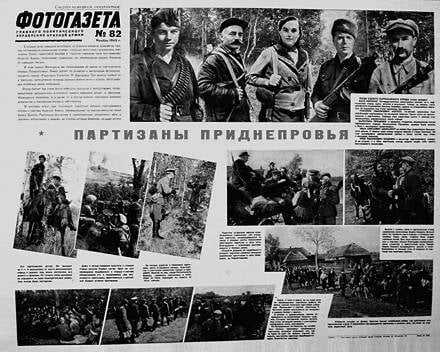 Since the end of 1942, and throughout 1943, a similar method of producing explosives has become commonplace. Thus, by November 1943, the 2 170 kg of tol was smelted in the partisan brigade named after V.I. Chapaev of the Gomel Union, and by this date the entire compound produced more than 8 500 kilograms of tola. The guerrillas of the Minsk compound over the summer 1943, smelted 2500 kilograms of tola. By the end of the same year, one of the brigades of the Pinsky Partisan Connection produced 4 000 kilograms of tola in a similar way. Melting tola was associated with great danger, the slightest indiscretion led to an explosion. Unfortunately, not without victims. Gomel partisans in the smelting tola 15 lost their fighters.
Since the end of 1942, and throughout 1943, a similar method of producing explosives has become commonplace. Thus, by November 1943, the 2 170 kg of tol was smelted in the partisan brigade named after V.I. Chapaev of the Gomel Union, and by this date the entire compound produced more than 8 500 kilograms of tola. The guerrillas of the Minsk compound over the summer 1943, smelted 2500 kilograms of tola. By the end of the same year, one of the brigades of the Pinsky Partisan Connection produced 4 000 kilograms of tola in a similar way. Melting tola was associated with great danger, the slightest indiscretion led to an explosion. Unfortunately, not without victims. Gomel partisans in the smelting tola 15 lost their fighters.With the risk of mined explosives and mines delivered from the mainland, the people's avengers used very effectively. A well-known expert in mine-blasting, Colonel IG Starinov, organizer of training partisan cadres and creating special partisan military equipment, cited the following data in his memoirs: “During the war, engineering troops spent about 25 million anti-tank mines and over 40 million anti-personnel mines. At the same time, on the front, one blasted tank spent more than 1 000 min. In the enemy's rear, the guerrillas spent on average less than four minutes on one eroded train or one car that was blown up (from the divisions of the guard minelayers) spent only about two minutes. ”
Information